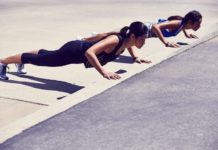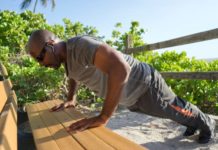
11 Walking Tips to Lose Weight Faster
If you’re looking for an easy way to lose weight, getting started with a walking program is a great way to do it. It’s low-impact, easy to fit into a busy schedule and accessible for almost any age or fitness level.
Use these eleven walking tips to burn more calories and shed pounds:
WALK MORE THROUGHOUT THE DAY
A power-walking workout is a great way to get in shape. And while a 30–45-minute power walk 4–5 days per week should be your focus, don’t stop there. To reach your weight-loss goals, try including short walks of 20 minutes or less throughout your day when possible. Here are a few ideas to get you started:
- Try a short walk following meals, which can help control your blood sugar, prevent cravings for more food and give your metabolism a boost.
- When completing daily errands, walk between destinations instead of driving when it’s a mile or less.
- Take a short walk when you feel frustrated or stressed. It can help your mood while you burn a few more calories.
- Always take the stairs instead of the elevator.
INCREASE THE INTENSITY
Upping your walking speed from a leisurely at-the-park pace is one way to get the heart pumping and burn more calories. In addition to picking up the pace, researchers at Ohio State University have also found that varying your walking speed during your workouts can help you burn up to 20% more calories than maintaining a steady pace.
During your walk, include one 30-second burst every 5 minutes, walking as fast as you can without jogging. Follow this with a slower 30-second recovery walk before you get back into your normal power-walking pace.
HIT THE HILLS
Walking on a hiking trail with hills is one way to include intervals in your walking routine without making it feel like torture. Walking uphill also burns more calories and helps you build muscle in the lower body, which can help speed up your metabolism, too.
If you don’t have a walking trail nearby that you can access 2–3 times per week, try a staircase workout or set the incline on the treadmill. Just remember to change your technique slightly. Lean forward as you climb, take shorter steps and bend your knees more than you would normally.
USE YOUR ARMS
While it might look silly, exaggerating your arm swing while you walk has additional benefits. It’ll help to speed up your pace, work your upper body and burn up to 10% more calories when compared to a normal arm swing.
To perfect your arm-swing technique, use these tips:
- Bend your arms to 90 degrees and maintain this form.
- The arm should extend behind the body as far as you can comfortably and naturally.
- On the upswing, the hand should rise to the level of the chest.
FOCUS ON FORM
Emphasizing correct posture can help improve your workout and calorie-burn, as well as prevent fatigue and common walking-related injuries. Focus on keeping your back relaxed, elongating your spine and keeping your shoulders neutral. Make sure to focus your gaze on the horizon, which helps keep your neck and head aligned.
You’ll also want to pay attention to how your foot strikes the ground. Your heel should strike the ground first to “help absorb the impact and minimize stress on the joints,” explains Dr. Michael Gleiber, a board-certified orthopedic spine surgeon. From there, your foot should roll smoothly forward and “push off of your toes using the toe flexors,” says Gleiber. By taking a few minutes to check in with your form, you can maximize your walking workouts to lose weight more efficiently.
HAVE A STEP GOAL
Setting goals is important to stay motivated. One of the best goals you can have as a walker is to work toward increasing the number of steps you take per day. The more steps you take, the more likely you are to burn calories. And shortening your stride to take more steps can actually help you speed up the pace, too.
Unlike distance and speed goals that can lead to an injury when progressed too quickly, increasing your steps is safer and can be amped up more rapidly. If you’re serious about losing weight, aim for 10,000 per day to start and increase your step count from there as you can tolerate.
KEEP CALORIE CONSUMPTION LOW
Walking can be a great way to destress, improve your health and strengthen your bones and muscles without risking injury. But for weight loss, you’ll need to concentrate on diet to make it happen.
Focusing on lean proteins and vegetables and limiting sugary and processed foods is where you should start. Keeping track of your daily caloric intake helps you shed pounds quicker and more safely than opting for one of the many fad diets instead.
INCLUDE STRENGTH TRAINING
A good way to break up your walks, strengthen your muscles and burn more calories is to include bodyweight exercises during your workout. Two or three times per week, stop and perform one of these exercises every five minutes during your walk. How many you do is up to you:
PUSHUPS (do them inclined on a park bench or against a wall to make it easier)

SQUATS, bending the knees to 90 degrees

WALKING LUNGES

FRONT OR SIDE PLANKS

AVOID SUGARY SPORTS DRINKS
One common mistake walkers and other endurance athletes make is opting for sugary sports drinks during their workout. The calories from these beverages negate most of the calories you’re burning, and in most instances they aren’t needed to sustain your activity. Unless you’re exercising at a high intensity for more than 90 minutes, stick with water, and save the sports drinks for your most difficult workouts.
CONSIDER A WALKING PLAYLIST
It can be difficult to keep your intensity high and stay focused during the duration of your walk to maximize calorie burn if you’re alone all the time. For those days when you need an extra boost, try some tunes. An upbeat playlist can be surprisingly motivating, so you’re motivated to walk further and faster while staving off boredom.
TAKE RECOVERY SERIOUSLY
A big part of losing weight with any activity is being consistent. That means walking regularly, and to do so you’ll need to minimize injury, illness and muscle soreness. By taking recovery more seriously between workouts, you’ll be able to exercise more frequently and burn more calories. Icing sore spots, stretching and foam rolling post-workout, eating a well-balanced diet and prioritizing quality sleep are all essential elements of a smart recovery plan to stay in tip-top shape.
Originally published April 2018, updated with additional reporting
Ready to take the next step? Unlock MyFitnessPal Premium to access custom goal settings, quick-log recipes, and guided plans from a registered dietitian. Premium users are 65% more likely to reach their weight loss goals!
































